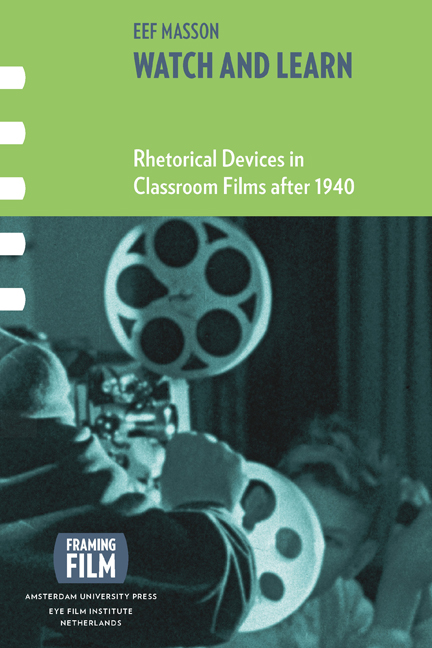5 - Textual Rhetoric II: Referencing the Pedagogical Dispositif
Published online by Cambridge University Press: 20 January 2021
Summary
INTRODUCTION
Textual rhetoric, I proposed in chapter 3, concerns those aspects of composition that can help create a willingness in the audience to consider a text's various claims. The rhetorical process, I added, is based on a principle of implication: it works through the construction of a so-called ‘reader-in-thetext’ (Suleiman and Crosman 1980; compare also Browne [1975] 1992). In the examples I have given so far, these filmic ingredients always have an evident spectatorial appeal, in the sense that their deployment is based on implicit assumptions as to what the intended viewers appreciate and/or like. The films mentioned exploit sensibilities or propensities that are supposed to be present in those watching; in doing so, they attempt to lure them into staying tuned. However, there are also other ways of implicating the audience.
In what follows, I argue that a good deal of the shorts under scrutiny do not merely seek to keep their audience attentive by complying with its presumed spectatorial wishes but (also) seem to manoeuvre their spectators into a specific, preferential viewing position. One of the ways in which they do this is by incorporating references to the pedagogical dispositif: representations of the particular tools, interpersonal relations or communicative forms that can be associated with, and even be taken to allude to, the particular set-up of which both text and viewer (ideally) form part. This way, they explicate their most relevant interpretational framework, and by extension also the audience disposition that is most befitting of that specific (type of) film.
Although the ingredients or features that I deal with next oftentimes resemble and sometimes even duplicate those which I singled out in the previous chapter, my assumptions as to how they function rhetorically are different in at least two ways. First, I make other inferences in terms of the type of viewer roles which they imply. Strategies of motivation, I argued, exploit presumed sensibilities on the part of the public. In this process they draw on communicative, and more precisely cinematic conventions. In other words, they appeal to knowledge and/or preferences which (young, school-going) spectators possess in their capacity as film viewers. The textual features I deal with next, in contrast, are rhetorically significant because of the relation they maintain with the audience as a pedagogical entity.
- Type
- Chapter
- Information
- Watch and LearnRhetorical Devices in Classroom Films after 1940, pp. 209 - 240Publisher: Amsterdam University PressPrint publication year: 2012



